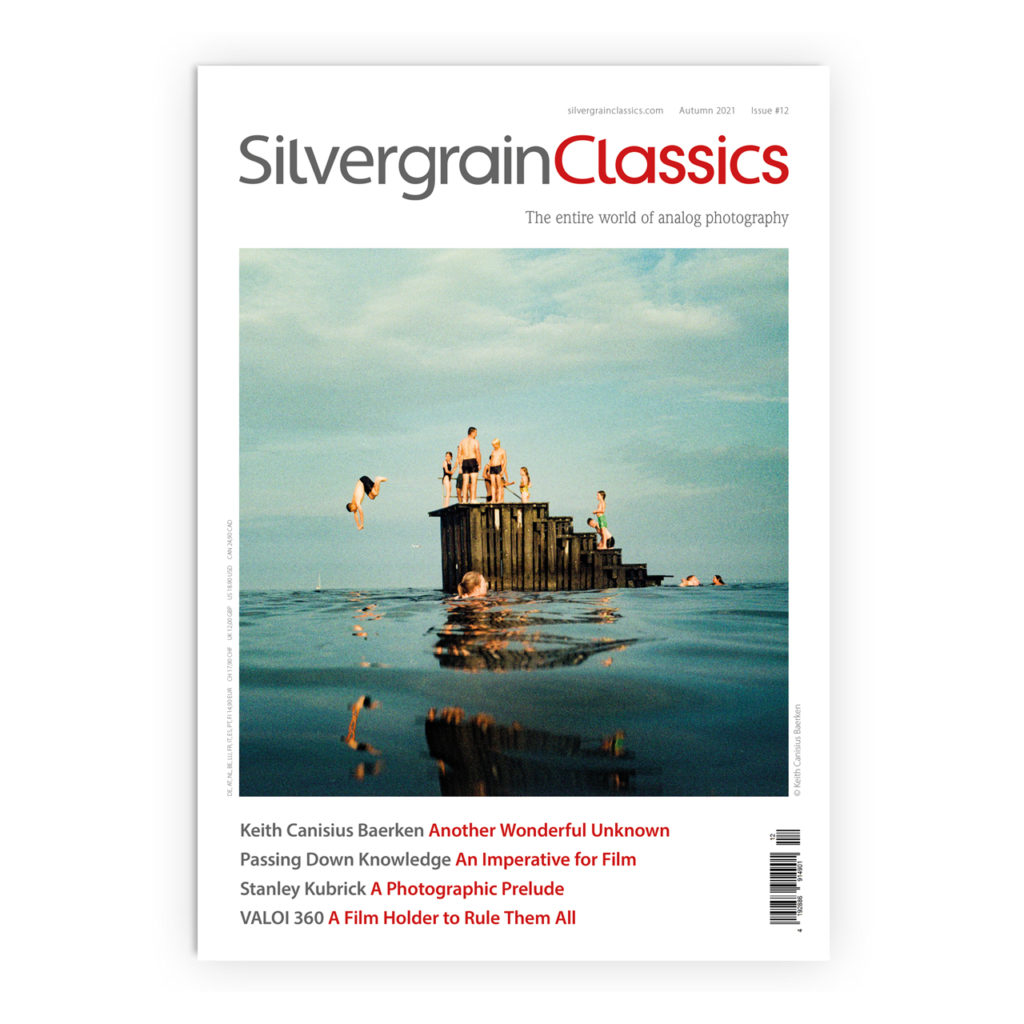Street Photography and Phil the Punk
I’m pleased that I did not join the group of people who tried photographing Phil as he passed by. These photographs are richened by the backstory.
By Christopher Osborne.
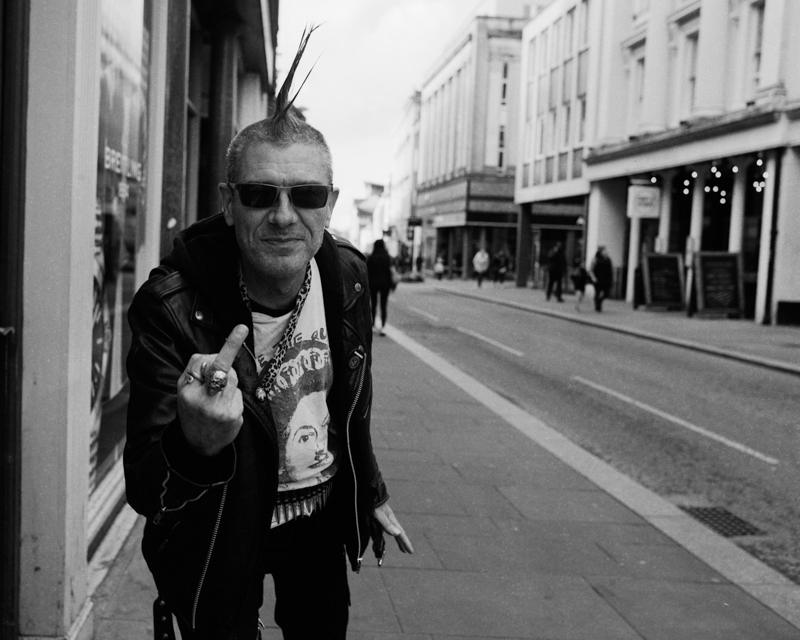
An accidental meeting with Phil the Punk during a street photography session.
Classic street photography captures busy street scenes. The fathers of the genre were Garry Winogrand and Joel Meyerowitz who pounded New York streets together for three years. Looking back on their work, their work is more than just images in the streets. There’s the fashion, hairstyles and even the “attitude” of the day.
Unless you live in New York, London or Tokyo, this kind of photography is difficult. There just isn’t the density of people to be able to shoot, and the kinds of “scenes” that Winogrand & Meyerowitz are few and far between. This is simply a result of the population being far less dense.
And let’s face it, a straight copy of the work of Garry Winogrand and Joel Meyerowitz will always be just that. A copy.
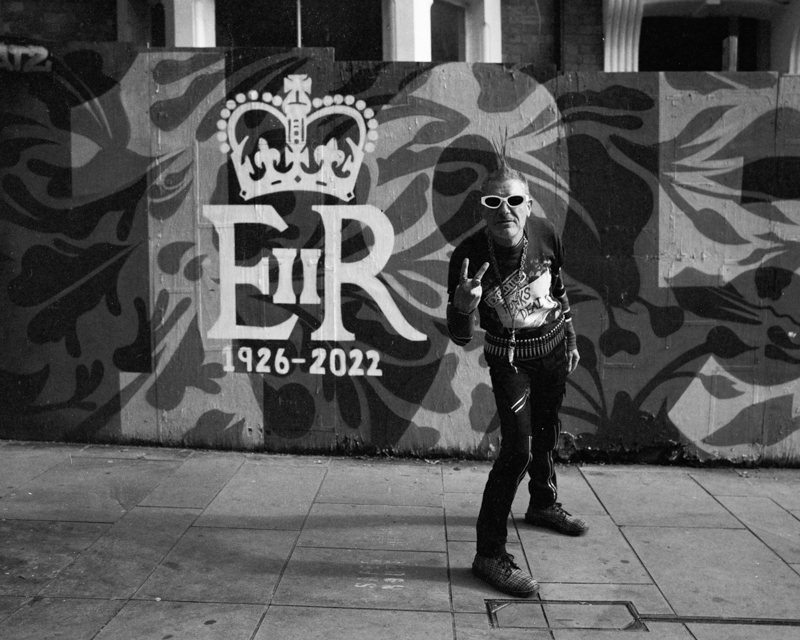
Phil the Punk chose this street location.
There is another, and quite possibly rewarding way of approaching photography in the streets. And that is to engage with the subject rather than try and sneakily capture a moment. Some criticise street portraiture as being some kind of poor relative to classical street photography, but I would argue otherwise. Engaging with people opens up an alternative view of life, far beyond the fleeting scenes created by snapping people.
For example, I was taking photographs in the streets of Northampton, England a few weeks ago. I started taking images of Northampton’s architecture. These will make fillers for a piece on life in Northampton, but to make a really interesting piece, I need photographs of people. While walking down the High Street, I noticed a punk coming towards me. As the punk approached me I complimented him on his look and asked if I could take his picture. “Sure, thank you for asking” came the reply. “Lots of people try and sneak pictures of me and that really annoys me”. Much to my surprise, my newfound friend Phil took a dozen steps back down the high street, and then he turned around and walked towards me with a totally anarchist, I own the street kind of gait. We talked, and that he had been lead guitarist and singer in a real punk band. He was on his way to the Northampton Museum and Art Gallery where “PUNK: Rage & Revolution” was the current exhibition. Phil regularly acted as an unofficial guide to exhibition visitors.
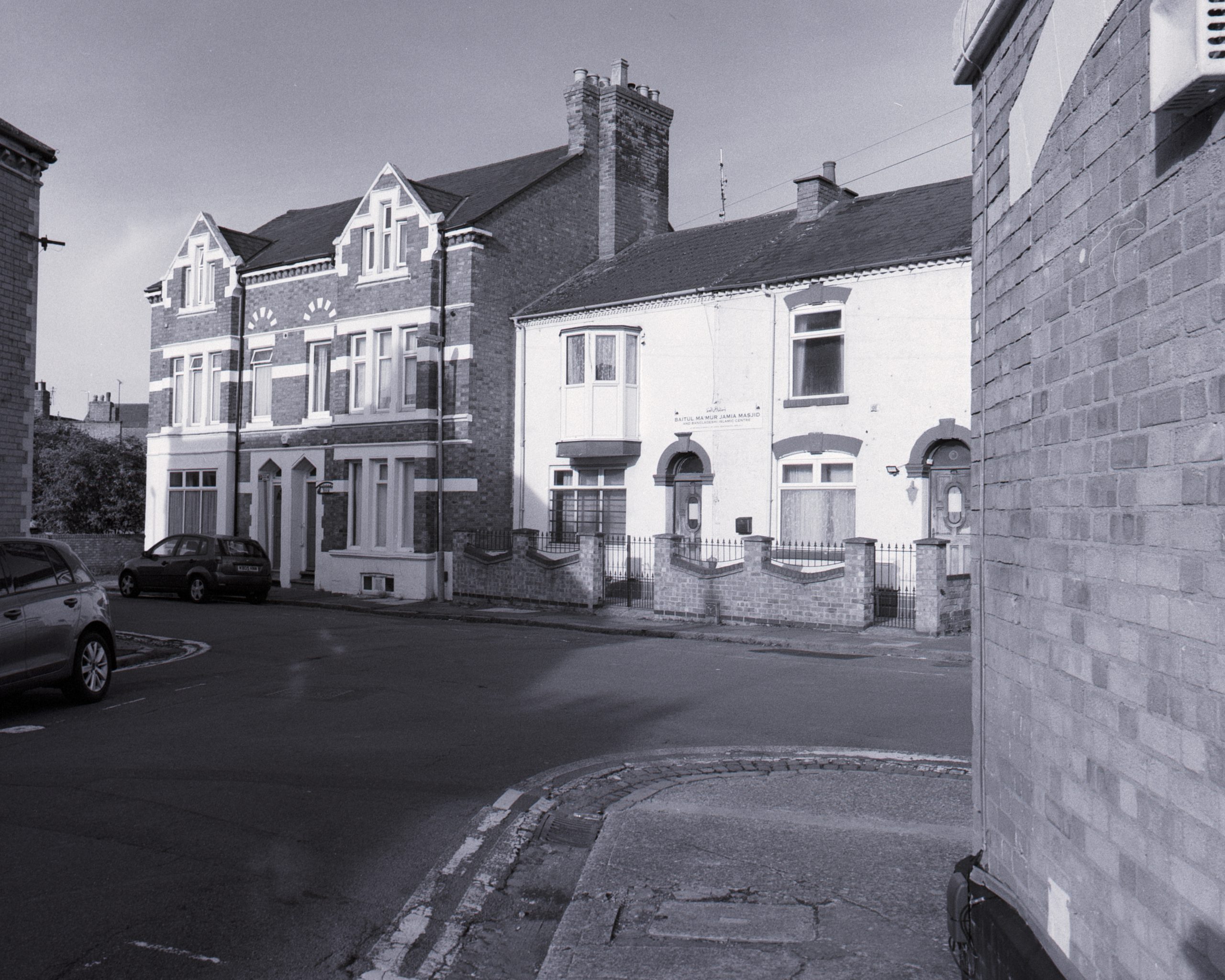
It’s also important to capture images that tell the background story too.
The second time Phil and I met was at the Northampton Museum and Art Gallery the following weekend. He had offered to be my personal guide around the Punk exhibition when we had first met on the high street a week before.
He looked surprisingly tame today. He was sporting a five-day beard, and he smelt of soap. He was wearing a hoodie in place of the leather biker jacket that he was sporting when we had first met.
Phil was a real punk. He had formed So77, a band that had developed a moderate following across the UK. Forget the exhibition. I found myself talking to the real thing.
Even though it was still morning, the smell of beer lingered on his breath. He apologized. Then laughed. “F*ck it. It is Saturday after all”.
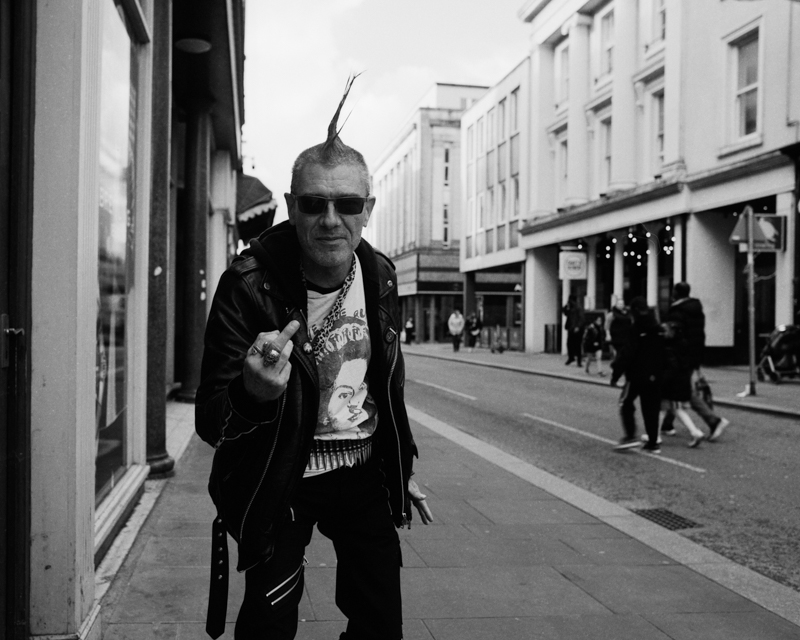
Phil the Punk has that anarchic look…
The waitress brought coffee to our table. Phil had ordered a double expresso, and his cup emitted a strong but pleasant aroma. He waited for it to cool, and then swallowed it in a single gulp.
We started talking about his musical career. One of So77’s highlights had been fronting for The Jam. The gig at Birmingham Town Hall had received rapturous applause. Unusually, the sound engineer from The Jam had complimented them on their performance. And at the after-show party, Paul Weller had made a point of coming over to say how much he had enjoyed their set.
Phil explained that he wanted to revive his band. He talked about how the previous iteration of the band had broken up. He was close to tears. The bass player and drummer had tried to oust him from his own band. “I had been doing a lot of coke and alcohol back then”, he admitted.
He had taken this badly and their relationship moved past the point of no return when he pointed out that he had paused the band when the bass player needed time off when his wife had been diagnosed with cancer. The drummer, who was married and had four children was already in the firing line for repeatedly hitting on Phil’s partner.
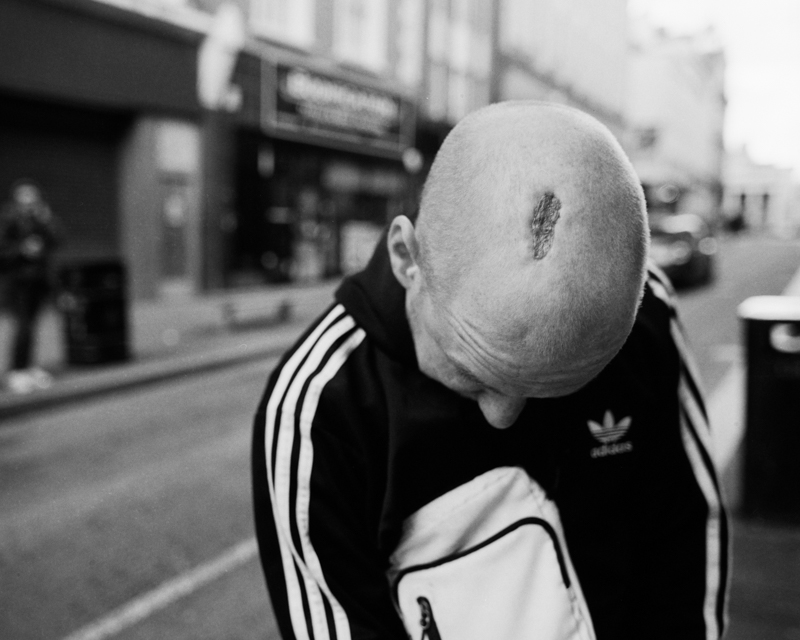
James was hit over the head with a beer bottle. That’s a story for another day…
This was the point where our conversation swerved wildly off course. We discovered that we had similar life experiences with failed relationships. Ironically, at various stages of our lives, we had lived quite close to each other, even though we had never met before. We mused over the negative serendipity, and shared horror stories of having relationships with our children brought to a premature end by angry wives who believed that children were a tool to be used as revenge, and should be treated as an extension of themselves.
We left the quiet of the gallery and crossed the street. Phil liked the idea of being photographed in front of a mural depicting Queen Elizabeth and King Charles. There was a faint aroma of urine at the base.
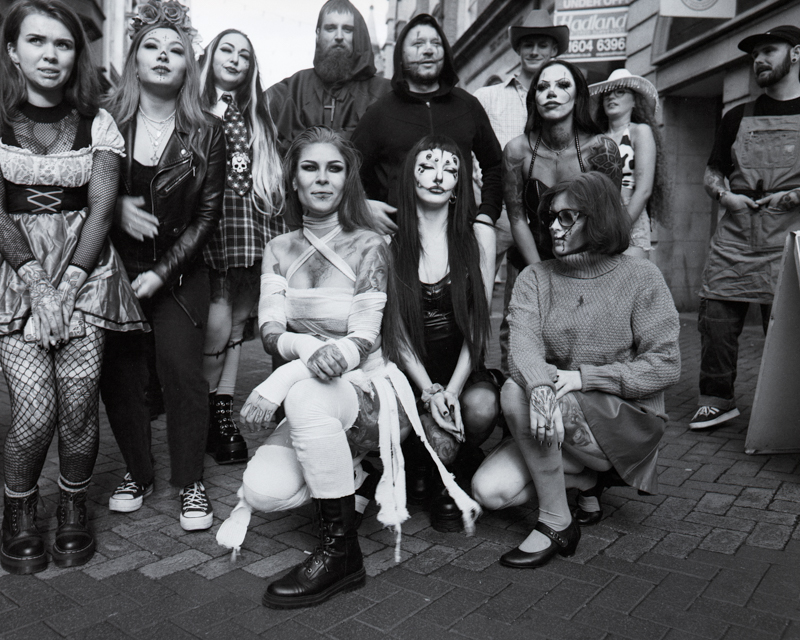
Halloween in Northampton. Also a story for another day.
The hoodie had gone and he was now sporting a yellow T-shirt proclaiming “We are the Sex Pistols”. His leather jacket had appeared from heaven knows where. He was wearing a pair of tartan boots, that he bought in a factory sale for a mere 5 pounds in 1993. They were purchased from the White and Bishop shoe factory in Daventry that mysteriously burnt down. “We were heartbroken, they built a TESCO supermarket on the site. My late best friend lived in a house next to the factory. He was offered double the market value of the house. Tesco won. They pulled up 200-year-old trees and ripped down Victorian houses. We were gobsmacked”.
The boots were immaculate, and I wondered if they had spent their life in the box. They certainly had not seen much street action.
Phil has all of the punk moves. He moves effortlessly from a display of anger to anarchy. But occasionally I can get him to drop the punk mask and the vulnerability of a man who has lived life shows through.
I’m pleased that I did not join the group of people who tried photographing Phil as he passed by. These photographs are richened because of the backstory.
Images © Christopher Osborne 2023.
You might also be interested in this article on the work of Ahsan Ali at https://silvergrainclassics.com/en/2020/09/friday-focus-ahsan-ali/
You can find an index to the entire collection of SilvergrainClassics magazines here https://silvergrainclassics.com/en/magazine/index-of-articles/

